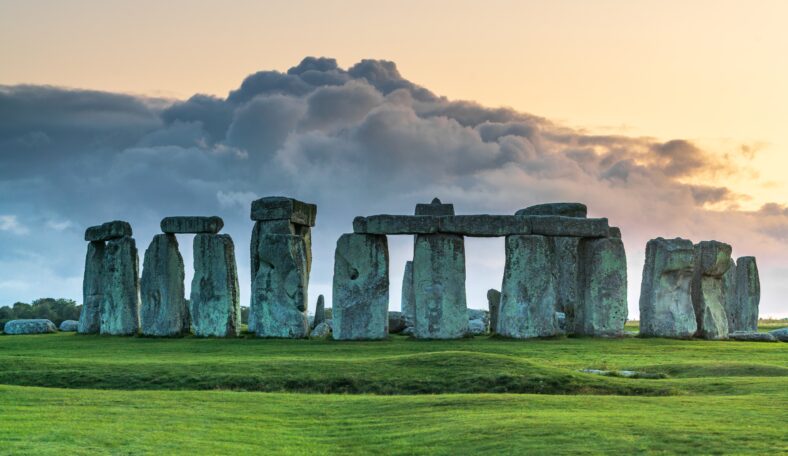An Ancient Monument And Burial Ground Was Uncovered In England That’s Even Older Than Stonehenge

An ancient monument and burial ground from the Stone Age in England is even older than Stonehenge, according to a new study. It is possible that the creators of Stonehenge used it as inspiration.
The large, circular monument is known as Flagstones. When researchers radiocarbon dated artifacts from it, they found that it dated back to about 3200 B.C., which means it is roughly 200 years older than Stonehenge.
In the past, archaeologists thought Flagstones was the same age as the earliest stages of Stonehenge, but this is not the case. The discovery makes Flagstones the oldest large circular monument in Britain.
Flagstones was first found in the 1980s during construction of the Dorchester bypass in Dorset, a county located in southwest England.
Excavations revealed a 330-foot-wide circular ditch made with intersecting pits that contained at least four sets of human remains.
The bodies of a cremated adult and three children were buried there. The partially cremated remains of three adults were buried somewhere else at the site.
Currently, half of the monument is underneath the bypass. The other half is beneath a historic home managed by the National Trust.
The artifacts from the site are being kept at the Dorset Museum. Flagstones is around 37 miles southwest of Stonehenge, which also includes a similar enclosure of intersecting pits and cremated burials.
The similarities led archaeologists to think that the two structures were built at the same time, around 2900 B.C. But after analyzing the timeline of Neolithic monuments in Dorchester and their artifacts, this idea was proven wrong.

Sign up for Chip Chick’s newsletter and get stories like this delivered to your inbox.
“With new techniques for obtaining precise radiocarbon dates and advanced statistical methods, we can now obtain really precise estimates for when events like monument construction took place,” said Susan Greaney, a lecturer in archaeology at the University of Exeter in the United Kingdom.
The research team radiocarbon dated human remains, red deer antlers, and charcoal at Flagstones to date the site more accurately. They estimated that the pits were dug around 3650 B.C. However, the circular enclosure was not constructed until 3200 B.C., and the burials were deposited soon after.
A young adult man was buried under a large sarsen stone at the center of the enclosure around 1,000 years after Flagstones was first used. After the construction of Flagstones, circular monuments were built in a number of other locations as well.
“It is part of a shift from predominantly rectangular or linear monuments (cursus monuments, long barrows) or irregular enclosures (causewayed enclosures) toward circular forms,” said Greaney.
Monuments like Flagstones may have been influenced by funerary practices in Ireland, where people were burying cremated bodies in circular tombs at the time.
The new study was published in the journal Antiquity.
More About:News